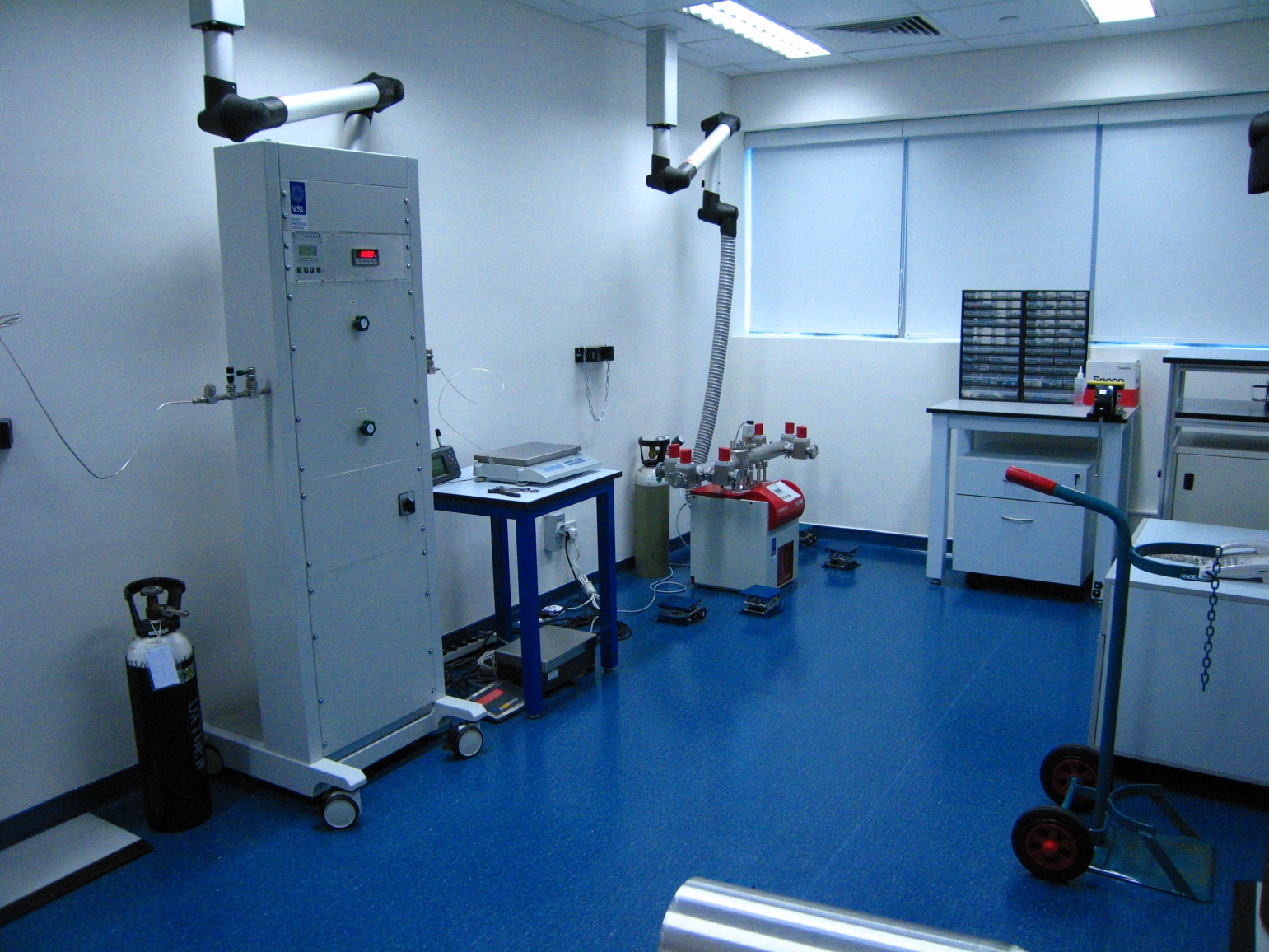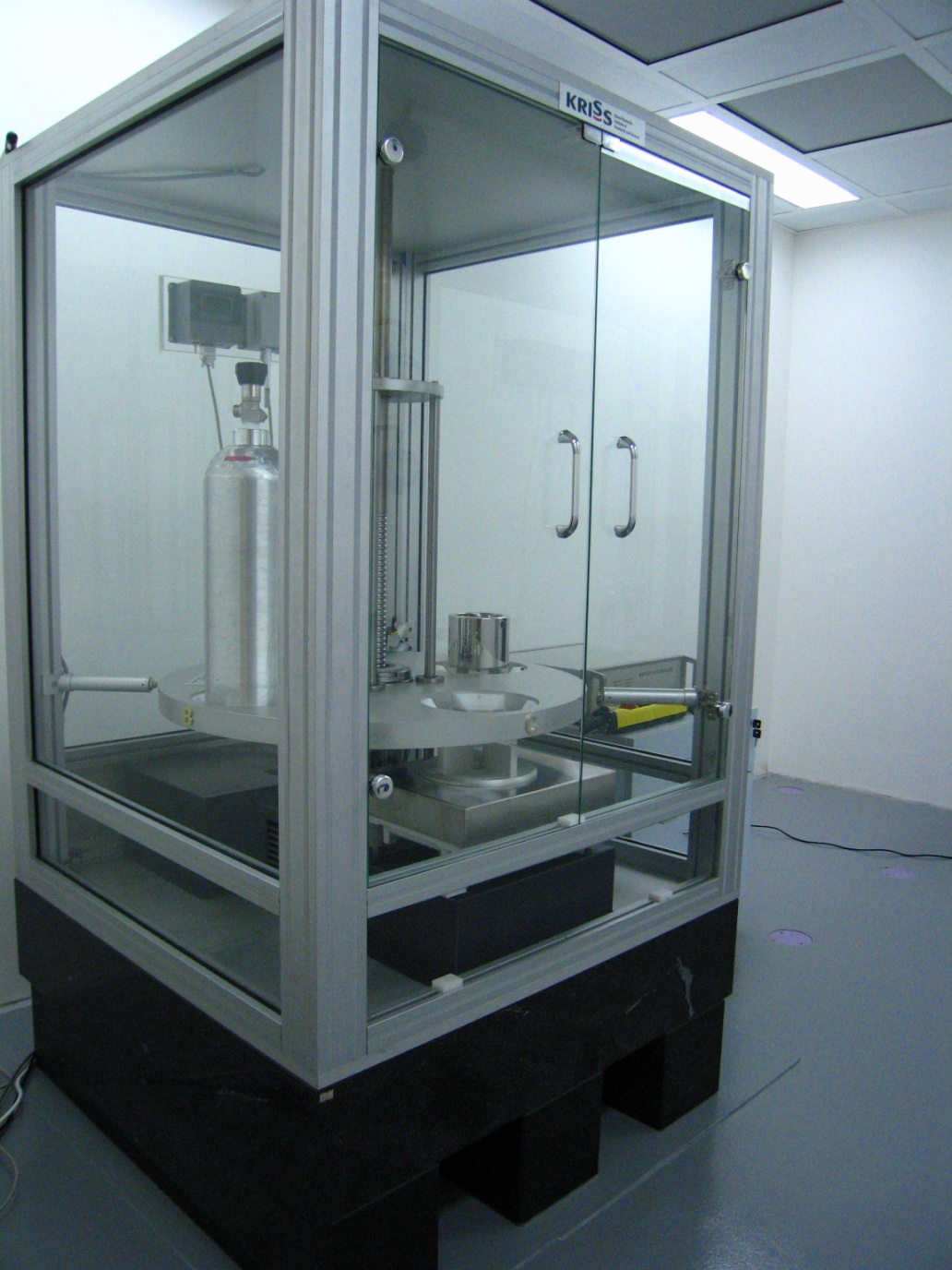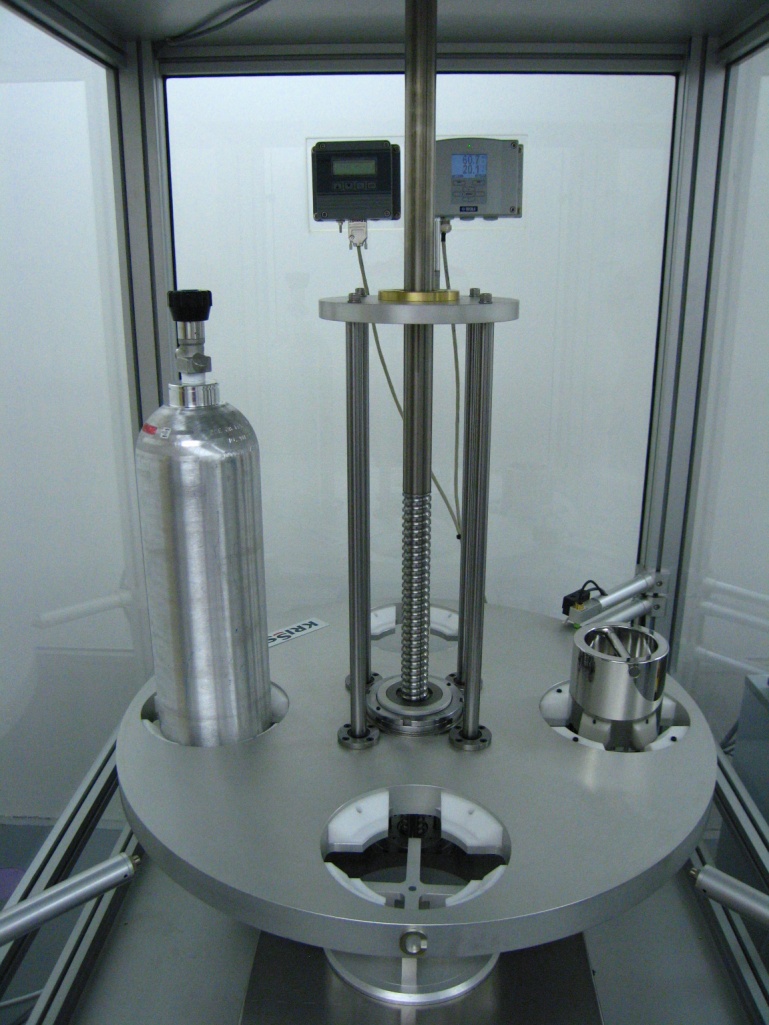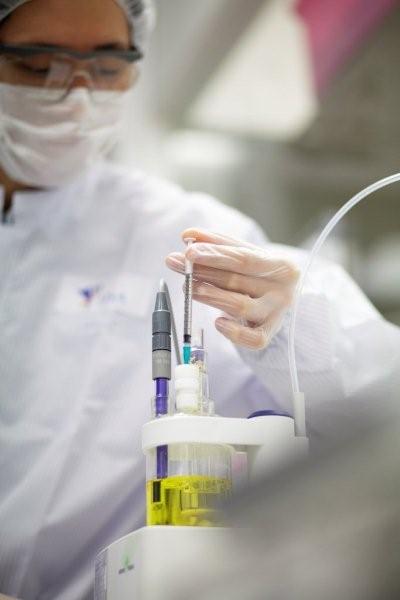Infrastructure for Metrology in Chemistry (MiC) Launched to Realise Accurate, Traceable and Internationally Comparable Chemical and Biological Measurements for Singapore
The chemicals industry contributed S$59 (US$48) billion to Singapore's economy in 2009, and Singapore is establishing itself as a global chemical and biomedical hub. A*STAR National Metrology Centre and Health Sciences Authority jointly set up a national metrology in chemistry infrastructure to ensure that chemical and biological measurements performed in Singapore are accurate, traceable and internationally accepted for chemicals, food, pharmaceutical, medical and healthcare products and services sectors.
Singapore, 3 November 2010: The National Metrology Centre (NMC) of the Agency for Science, Technology and Research (A*STAR) and the Health Sciences Authority (HSA) have jointly set up a national Metrology in Chemistry (MiC) infrastructure. Senior Minister of State for Trade and Industry and Education, Mr S. Iswaran announced the launch of the MiC infrastructure at the Metrology in Chemistry-Essential for Pollution Control and Climate Change Monitoring symposium on 3 November 2010. This event is held in conjunction with a one-week international event comprising workshops, symposia and meetings in Singapore for the first time from 1 to 5 November 2010.
The new metrology capabilities at NMC and HSA will help Singapore-based enterprises achieve chemical measurements that are accepted worldwide, giving them the critical advantage in accessing international markets for chemicals, food, pharmaceutical, medical and healthcare products and services. The primary beneficiaries of the new infrastructure are the chemicals and biomedical sectors which require accurate and comparable chemical and biological measurements. The industry will be able to tap the MiC facility and expertise at NMC and HSA to validate measurements for health, safety and environmental protection, and gain international acceptance for their measurement results.
MiC Infrastructure – Key to Achieving Comparability of Analytical Data
Scientific measurements provide important information to serve as an objective basis for the formulation of policies; facilitation of trade; enforcement of regulations; evaluation of food and product safety; protection of our environment; and advancement of science. A unified system of measurement units, and its equivalence among economies, is vitally important to achieving measurement comparability worldwide. Singapore is a signatory of the 135-year old international diplomatic treaty which now forms the base for member states to propagate the use of the International System of Units (SI) within their countries.
MiC, or Chemical Metrology, is the science of achieving accurate and traceable analytical data in chemical measurements. For analytical data to be traceable and comparable, they have to be based on a common reference, the SI. In testing laboratories,this is normally achieved by comparing the data produced by analytical instruments against reference standards, known as certified reference materials, whose values have been assigned or validated by the national metrology institute; the use of standardised methodologies; and participation in comparative studies. One of the important tasks of the national metrology institutes is to ensure that the reference standards available to the users are traceable to the SI and globally comparable.
MiC Programmes to Assist Industry
To assist the industry in achieving traceable chemical measurements, A*STAR NMC, which is Singapore's national metrology institute, has established MiC capability in the field of gas metrology. Traceable gas measurement is essential for many applications: from pollution control (see box stories) and monitoring of ambient and indoor air quality, to a myriad of industrial processes in power generation, chemicals, petrochemicals, electronics and waste management. HSA, which has been appointed as the Designated Institute, has also set up MiC in food, pharmaceutical, medical, healthcare and forensics. Together, NMC and HSA will provide metrological support to Singapore-based enterprises in the area of: assignment of reference values; certified reference materials (CRMs) that are traceable to the SI; validation of measurement methods; and proficiency testing programmes to help laboratories improve their processes.
****** END ******
Enclosed -
- Box Story 1: MiC Infrastructure Supports Pollution Control and Climate Change Monitoring
- Box Story 2: Chemical Metrology @ HSA
Box Story 1
MiC Infrastructure Supports Pollution Control and Climate Change Monitoring
Pollutants commonly found in the air are carbon monoxide (CO), nitrogen dioxide (NO2), sulphur dioxide (SO2), ground level ozone (O3) and air borne particles called particulate matters. Prolonged exposure to high concentration of ozone at ground level results in health hazards. A recent example is the haze, formed when the atmosphere is filled with dust, smoke and dry particles that obscure visibility. High level of exposure to haze causes irritation to respiratory system, may worsen asthmatic conditions and in more serious cases, may lead to breathing difficult and respiratory infection which can have fatal consequences.
- Validating Measurement of Pollutants
In Singapore, the National Environment Agency (NEA) is the authority for pollution control and ambient air quality monitoring. Air samples are collected and analysed using analytical instruments to determine if the amount of pollutants are within the acceptable limits set by NEA.
Under the national MiC infrastructure NMC is setting up gas metrology capability to provide reference gas standards needed to validate analytical instruments used to measure pollutants. According to Dr Lee Loke Chong, Executive Director of NMC, “These gas standards are produced at NMC using methods that ensure traceability to the SI, and their comparability are assured as these standards are compared with that of national metrology institutes in other countries. Consequently, the analytical measurements carried out in Singapore will be accepted by Singapore's major trading partners.”
Added Dr Lee, “The initial phase of the development of MiC infrastructure will see NMC coming up with reference standards for pollution gases such as CO, NO2 and SO2, and calibrating instruments for the measurement of ground level ozone (O3). The new capability will also cover propane, a form of hydrocarbons, which comes from automotive exhaust. In the area of climate change monitoring, NMC will provide standards for greenhouse gases like carbon dioxide (CO2) and methane (CH4). NMC expects its gas metrology capability to be extended later to other pollutants like volatile organic compounds in the next phase of development of the gas metrology capability which raise the level of greenhouse gases (such as O3 and CH4) that contribute to global warming.”
- Environmental Protection and Climate Change Need Traceability and Comparability
Recognising the need for standardised, accurate and reliable data in the field of meteorology, hydrology and other geophysical sciences, the World Meteorology Organisation (WMO) signed an Agreement in 2002 with the International Committee for Weights and Measures (CIPM), which represents the member states of the Metre Convention. The Agreement states that measurements related to environmental protection and climate change monitoring carried out under the auspices of WMO would have to be traceable to the SI and are comparable within the framework of the Metre Convention. The establishment of gas metrology infrastructure in Singapore is a timely development as it would ensure that measurements done for emission control and climate change monitoring are aligned with WMO's requirements.

Filling of gas standards using precision gas filling station


Primary gravimetric system for accurate weighing of gas standards
Box Story 2
Chemical Metrology @ HSA
As a “Designated Institute” for Chemical Metrology, HSA has established a new Chemical Metrology Laboratory within its Applied Sciences Group to develop the technical capabilities to spearhead the Metrology in Chemistry programme in the areas of food, pharmaceutical, medical, healthcare and forensics.
Said Dr Lee Tong Kooi, Division Director, Chemical Metrology Division, HSA, “The goal of the HSA Chemical Metrology Laboratory is to support the national measurement system, ensuring that chemical measurements made in Singapore are reliable and fit for their intended domestic purposes; and equivalent to measurements made in other countries in meeting regulatory and treaty requirements.”
The laboratory has been specifically designed with a clean room and has a wide array of instruments to support its measurement activities. A special “metal-free” section is also available for preparation work in the area of inorganic chemistry.
The laboratory currently focuses on inorganic and organic analyses covering food, pharmaceuticals and clinical healthcare, and is working towards providing a full range of metrological services to government and private sector laboratories. It will be extending its work to cover forensics and biopharmaceuticals in the next phase of its capability development. Some projects currently undertaken by the laboratory include the development of high accuracy methods in the analysis of health status markers in human serum; preservatives in food; essential and trace elements in food; and toxic metals in herbal and cosmetic products.
To ensure that measurements made are comparable to other National Metrology Institutes (NMIs), the laboratory participates actively in relevant regional and international comparative studies organised by the regional and international metrology communities, respectively. Studies participated so far include purity assessment of organic compounds, non-permitted substance and preservatives in food, and trace elements in drinking water. These studies illustrate the great variety of capabilities to be developed and the analytical challenges faced by the laboratory.
The laboratory is also working with the Singapore Accreditation Council (SAC) to conduct Proficiency Testing (PT) surveys to assess the needs of local testing laboratories. PT programmes are important for testing laboratories to improve their processes. So far, it has completed three PT surveys and indentified areas for improvement.
Chemical Metrology @ HSA

The HSA Chemical Metrology Laboratory conducts sample preparation for inorganic analyses in the “metal free” section

A HSA Chemical Metrology Laboratory staff measuring the moisture level in an alcohol sample for purity assessment
AGENCY FOR SCIENCE, TECHNOLOGY AND RESEARCH
HEALTH SCIENCES AUTHORITY
3 NOVEMBER 2010
Download pdf version here549 KB
Consumer, Healthcare professional, Industry member
Published:
Press Releases